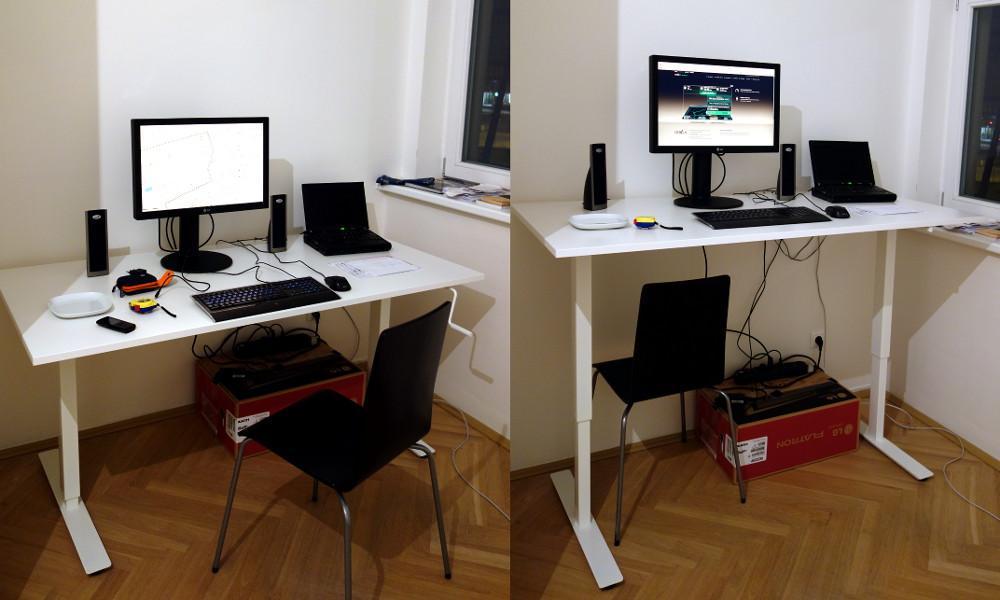A standing desk is just what the doctor ordered
[vc_empty_space]Being a developer requires significant hours sat in front of a computer. Being 6ft 6 raises other issues, especially with posture. Muscle strain is greater, due to the leverage effect, and this really took its toll on me physically.
After various physiotherapy appointments with an accomplished health professional, who meticulously approached the myriad symptoms I’m experiencing (there’re many!), much like Sherlock Holmes conquered a particularly tricky case. It was suggested that the most practical solution was to simply change my desk. I was told in no uncertain terms to “Stand up more” and “remember, sitting is the new smoking”. It didn’t take much persuasion, and IKEA had an eager customer the next day.
I opted for the SKARSTA. At £195, it was vastly cheaper than any alternatives; even the IKEA BEKANT sit/stand desk is priced from £445. Other than a hidden hand crank to raise and lower the desk, the SKARSTA does not offer any other unique features and is typically Scandinavian in appearance.
Rather than rattle on like the world’s most novice salesman, here’s a shortlist of the benefits I’ve experienced:
• No mid-afternoon “muscle strain”. When sat down all day, I previously experienced quite considerable muscle fatigue, especially in the lower back, and through the back of the legs.”
• No evening tiredness. I’ve just done a long day’s work, and I feel physically rather energetic. Perhaps I should exercise more? I tried. I tried a brief routine of running in the evenings three times a week, and it made little difference (I can normally run 5k at the weekend). I tried cycling to and from work, which made a nice improvement in many ways, but simply sitting less frequently eclipses that.
• Improved posture. This is obvious, and the whole reason for the desk, but bears mentioning. My spine has improved and the nerve pain that has plagued me for over twelve months is a shadow of its former self. In fact, my spine seems to be getting used to a more natural position, and I’m functioning better as a result.
• Improved concentration. Reaching mid-afternoon no longer signifies tiresome muscle fatigue from being sat in a similar position for so long.
• More calories burned. My Apple Watch is certainly indicating an improvement, and sending its “you’ve hit your stand goal for today” notifications, every day.
If I can give one noticeable downside, is that it fast becomes a nuisance to wind the desk’s crank. It takes slightly more than 90 revolutions to completely raise or lower the desk. The crank’s grip is oddly tighter than the actual crank motion. It can make me think twice about raising the desk at the time it feels tempting to stand, but it only feels like a minor inconvenience at worst.
I am not standing for eight hours a day, but changing between sitting and standing. I do this multiple times during the day. Standing for eight hours is certainly possible, but I am not there yet. I intended to draft up a schedule of sitting for a couple of hours, then standing for a couple. However, I find myself vastly more productive by simply allowing my body to tell me when to do either.
The Design Bench - Helping Businesses Succeed in South Wales
[vc_empty_space]The Design Bench is a full-service design agency based in South Wales dedicated to crafting design experiences that reflect our client’s uniqueness to maximise audience participation.


Recent Comments